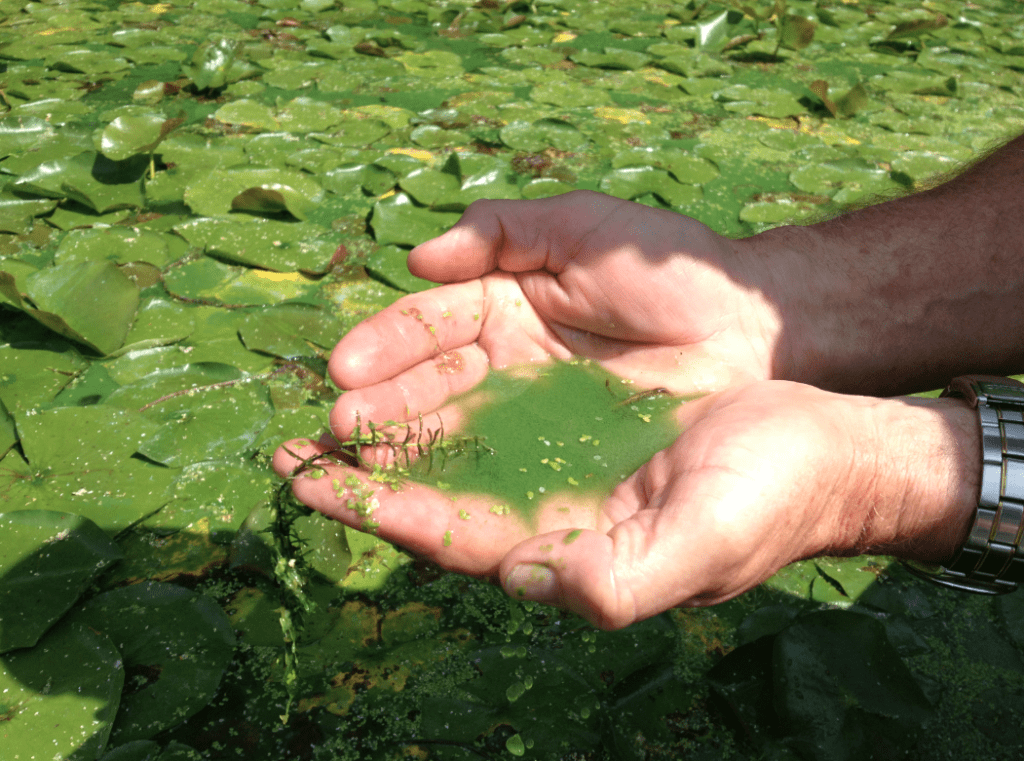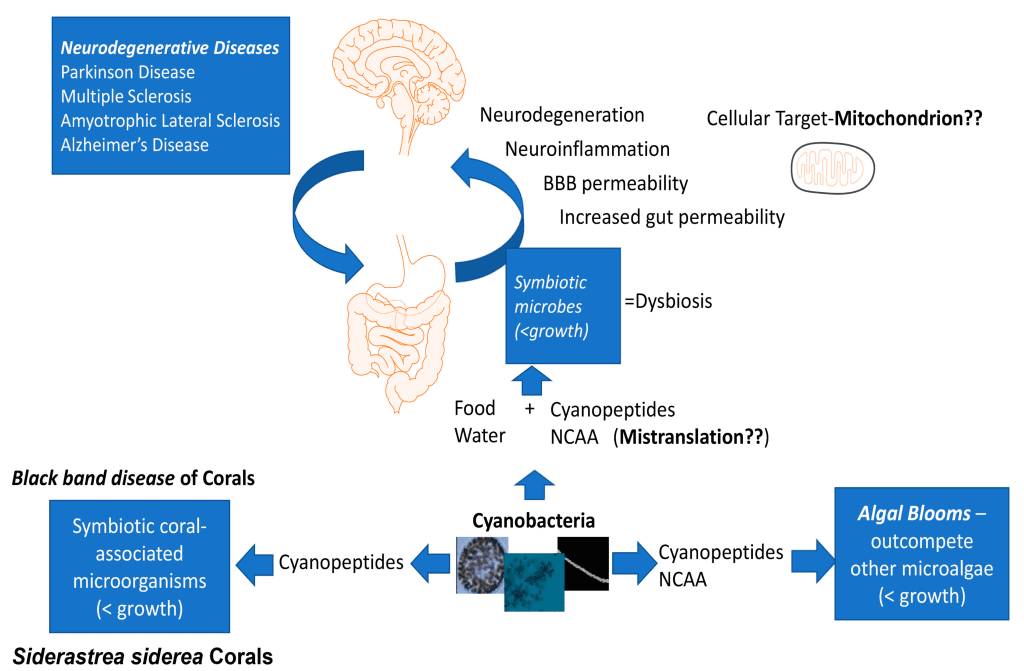Cyanobacteria have been increasingly linked to neurodegenerative diseases such as Motor Neuron Disease (MND) and Amyotrophic Lateral Sclerosis (ALS). This connection has sparked significant interest in the scientific community due to its potential implications for understanding and treating these devastating conditions.

Cyanobacterial Neurotoxins
Cyanobacteria, also known as blue-green algae, produce various neurotoxins that have been associated with neurological disorders. The primary neurotoxin of concern is β-N-methylamino-L-alanine (BMAA), which has been found to accumulate in the food chain and potentially contribute to the development of neurodegenerative diseases.

BMAA and Neurodegenerative Diseases
Mechanism of Action: BMAA is believed to cause protein misfolding and aggregation, a hallmark of neurodegenerative diseases like ALS and MND. It can also lead to oxidative stress and mitochondrial dysfunction, further contributing to neuronal damage. Bioaccumulation: BMAA can accumulate in aquatic ecosystems and enter the human food chain through consumption of contaminated fish and shellfish. This bioaccumulation raises concerns about long-term exposure and its potential impact on neurological health.
Evidence Linking Cyanobacteria to ALS/MND
Several studies have provided evidence supporting the connection between cyanobacterial toxins and neurodegenerative diseases:
- Guam ALS Cluster: The high incidence of ALS-PDC (Amyotrophic Lateral Sclerosis-Parkinsonism Dementia Complex) in Guam was linked to the consumption of cycad seeds containing BMAA produced by cyanobacteria.
- Geographical Clusters: Researchers have identified ALS clusters near lakes and coastal areas with frequent cyanobacterial blooms, suggesting a potential environmental risk factor.
- Animal Studies: Experimental studies on animals exposed to BMAA have shown neurodegenerative effects similar to those observed in ALS and MND.
Ongoing Research and Implications
While the link between cyanobacteria and neurodegenerative diseases is compelling, more research is needed to fully understand the mechanisms involved and establish a definitive causal relationship. Scientists are exploring potential preventive measures and treatments based on this connection, including:
- Developing methods to detect and monitor BMAA levels in the environment and food sources
- Investigating potential therapeutic interventions targeting BMAA-induced neurodegeneration
- Studying the interaction between genetic susceptibility and environmental exposure to cyanobacterial toxins
The ongoing research in this field holds promise for advancing our understanding of ALS and MND, potentially leading to new strategies for prevention and treatment of these devastating neurological conditions.


